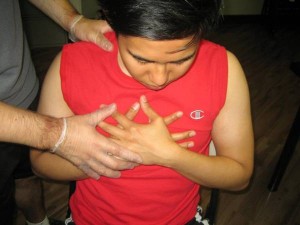How dangerous is heart disease?

Despite the active awareness-raising regarding heart problems and how they affect us, it still remains the number one killer of Americans and people all over the world. The WHO and CDC has released reports that label heart disease as the leading cause of mortality in the US and worldwide. Each year, around 600,000 Americans die each year because of heart disease. Back in 2012, more than half of the deaths caused by heart problems in the US were male. It is actually the number one cause of mortality for both American men and women.
While a lot of people are aware of these staggering statistics, about 49 percent of Americans actually have one out of three major risk factors: hypertension, high cholesterol, and smoking.
Hypertension as a risk factor
- High blood pressure is one of the major risk factors of developing heart disease and its complications, characterized by systolic blood pressure higher than or equal to 140 OR diastolic blood pressure higher than or equal to 90.
- Hypertensive blood pressure has to be taken twice, several days apart, within one week.
- The latest release from the Joint National Committee (JNC 8) has new guidelines for pre-hypertensive and normal blood pressure values. Previously, a systolic blood pressure of 120 and a diastolic blood pressure of 80 was considered normal. In the update, systolic blood pressure of 120 – 139 and diastolic blood pressure of 70 to 89 is now considered pre-hypertensive.
- Normal blood pressure values have to be equal to or lower than a systolic blood pressure of 110 AND a diastolic blood pressure of 70. If the systolic blood pressure of a person is higher than 110 OR has a diastolic blood pressure higher than 70 he or she is automatically considered pre-hypertensive/hypertensive (e.g. 140/70 – hypertensive, 120/100 – hypertensive)
Learning CPR
One of the most dangerous complications of heart disease is cardiac arrest from a heart attack. Heart attacks are dangerous because if the heart stops, our major organs become deprived of oxygenated blood, including the heart itself. Without adequate oxygen delivery, tissue begins to die or necrose. Necrosis is an irreversible process – hence the danger.
However, the first studies that attempted to restore cardiac functionality started way back in the 1960s, leading to a skill healthcare providers use today – cardiopulmonary resuscitation or CPR. Each year, millions of people are trained to give basic, bystander CPR as well as more advanced skills for HCPs. You can be one of them!
At San Francisco CPR, you can enroll in any of the following programs re: CPR training:
- Heartsaver CPR/AED (Basic Life Support)
- Heartsaver CPR/AED C for HCPs (Basic Life Support)
- Basic Life Support for HCPs (Basic Life Support)
- Advanced Cardiac Life Support (Advanced Life Support)
- Pediatric Advanced Life Support (Advanced Life Support)
The last three programs on the list also have available re-certification classes. Re-certificaton classes are shorter than the training programs, taking anywhere between 4 and 8 hours. Basic programs are shorter, running for around four hours while advanced programs typically take two days to finish.
